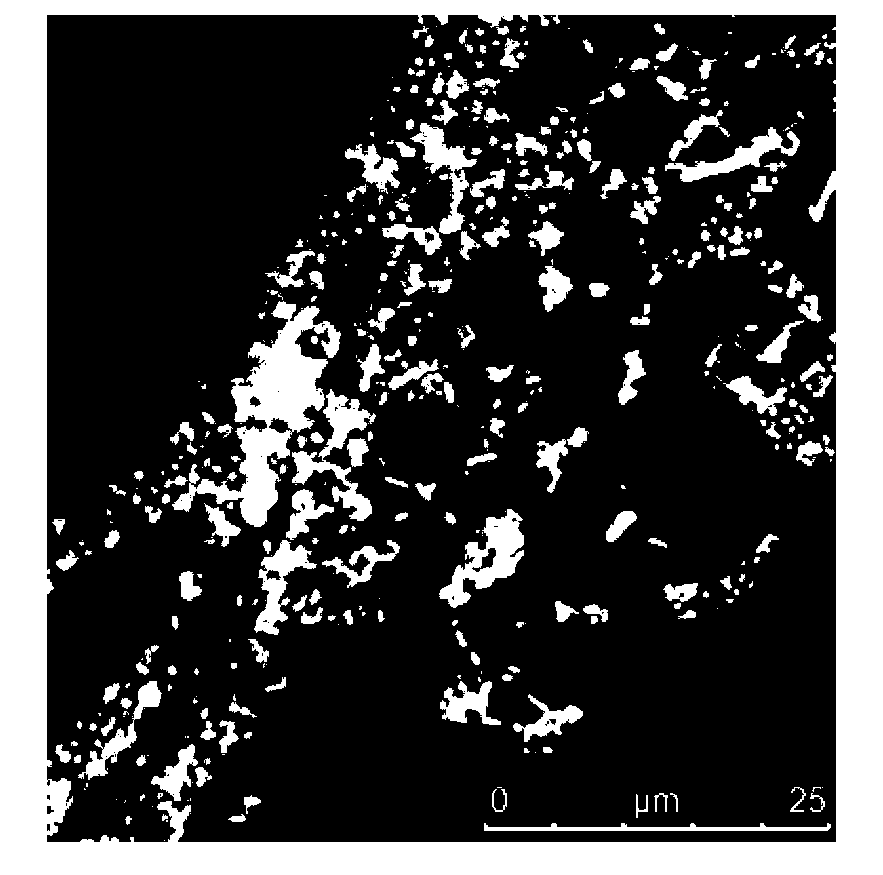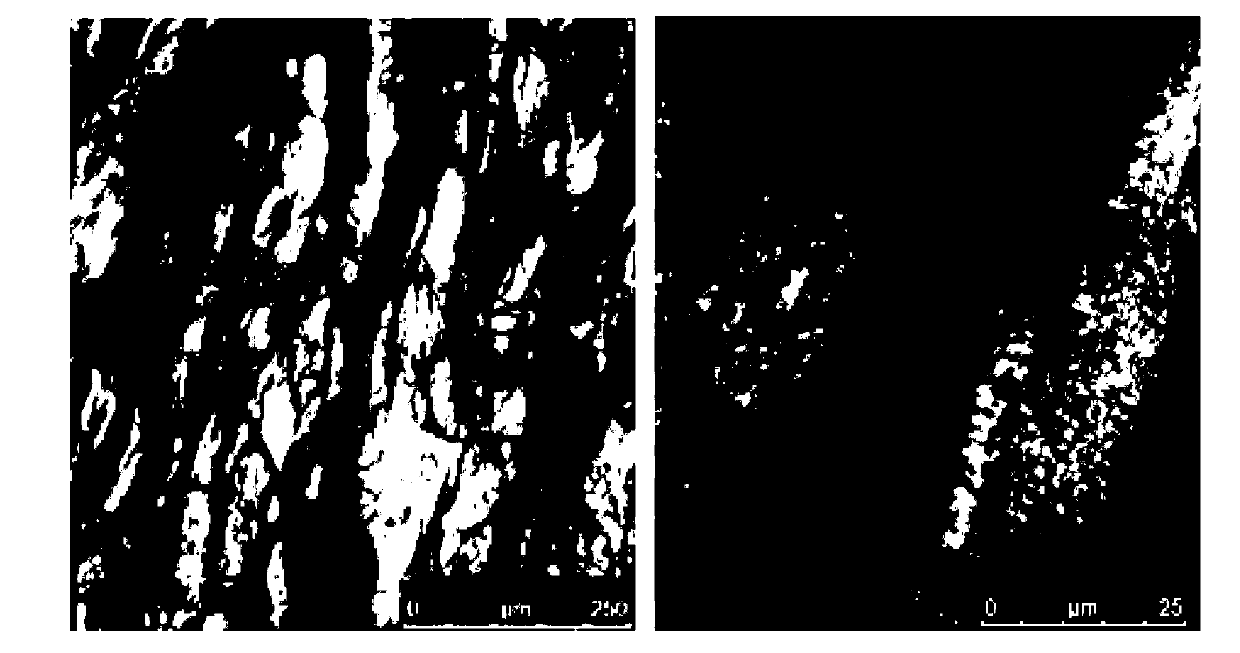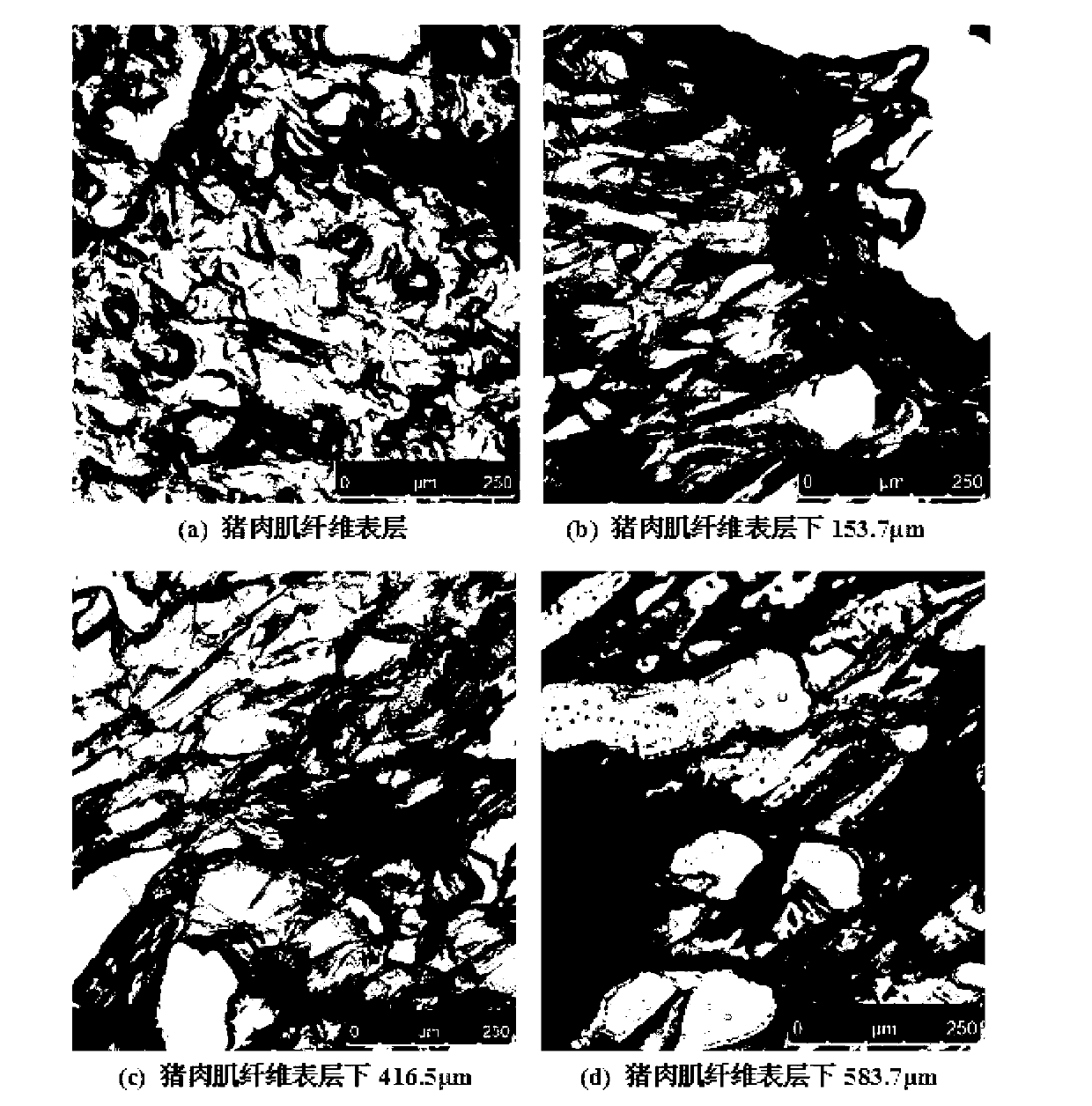Quick detection method for in-situ fluorescent staining of livestock meat spoilage bacteria
A technology of fluorescent dyeing and detection method, which is applied in the field of rapid detection of in-situ fluorescent dyeing of livestock spoilage bacteria to achieve the effects of ensuring the quality and safety of meat products, prolonging the shelf life of meat products, and simple operation.
- Summary
- Abstract
- Description
- Claims
- Application Information
AI Technical Summary
Problems solved by technology
Method used
Image
Examples
Embodiment 1
[0022] The dominant spoilage bacterium P.koreensis PS1 will be isolated and identified from spoiled pork (this strain has been reported by Soon Wo Kwon, M.Hultberg and Gong Fengjuan et al.; Pseudomonas koreansis sp.nov., Pseudomonas umsongensis sp.nov.and Pseudomonas jinjuensis sp. nov., novel species from farm soils in Korea; International Journal of Systematic and Evolutionary Microbiology (2003), 53, 21-27). Firstly, the strain was cultured and activated on the slant of soybean casein agar medium (TSA medium) test tube, and made 10 times with sterile water. 4 ~10 5 CFU / mL cell suspension; at the same time, cut a pork tenderloin sample with a size of about 3cm×3cm×2cm, soak it in the bacterial solution for 10s for inoculation, take it out after draining, put it in a sterile plastic bag, seal it, and store it in a refrigerator at 4°C.
[0023] Use a cryostat to cut a thin slice with a thickness of 60 μm from the surface of the meat sample inoculated with the dominant spoilag...
PUM
 Login to View More
Login to View More Abstract
Description
Claims
Application Information
 Login to View More
Login to View More - R&D
- Intellectual Property
- Life Sciences
- Materials
- Tech Scout
- Unparalleled Data Quality
- Higher Quality Content
- 60% Fewer Hallucinations
Browse by: Latest US Patents, China's latest patents, Technical Efficacy Thesaurus, Application Domain, Technology Topic, Popular Technical Reports.
© 2025 PatSnap. All rights reserved.Legal|Privacy policy|Modern Slavery Act Transparency Statement|Sitemap|About US| Contact US: help@patsnap.com



